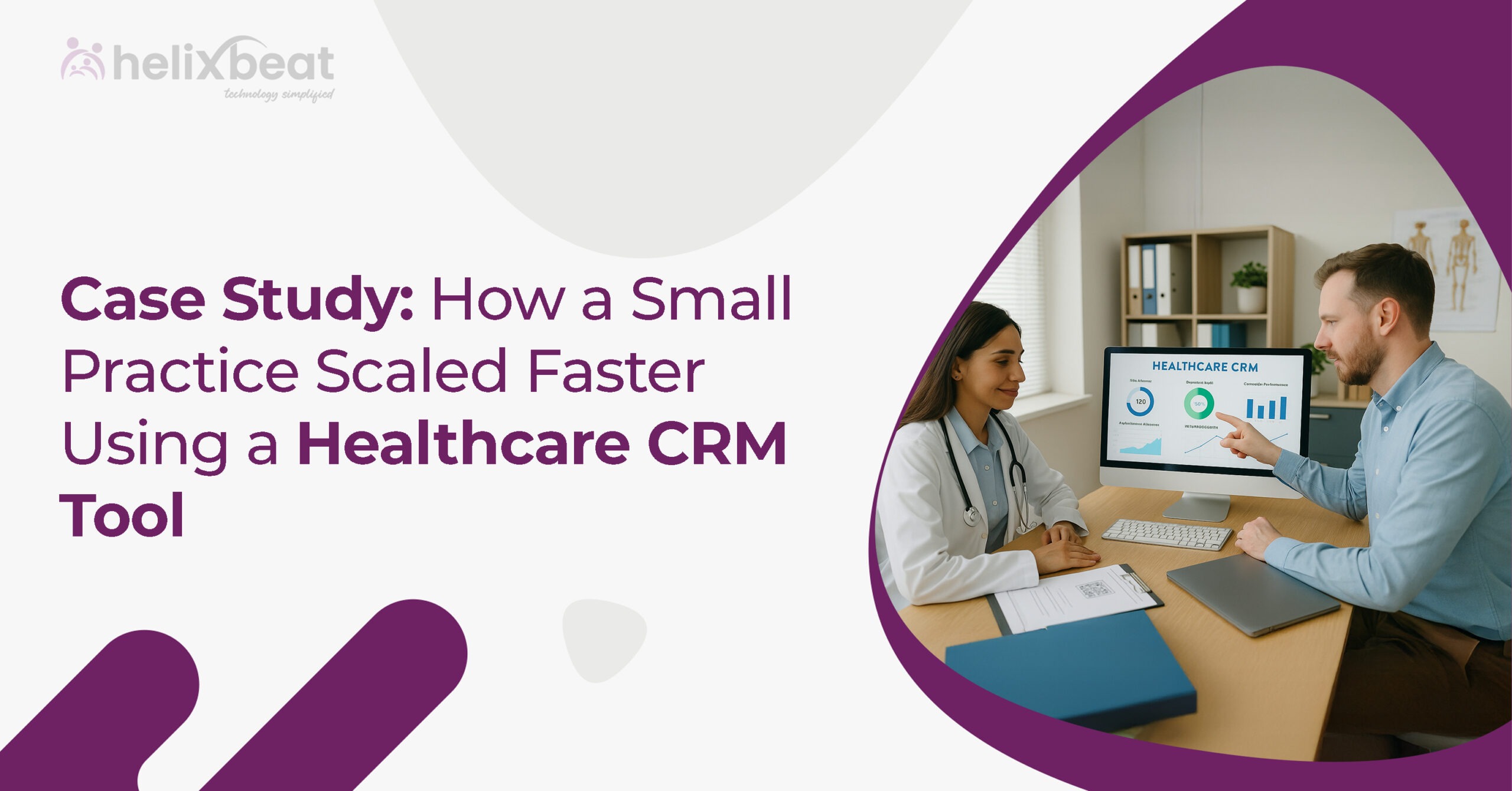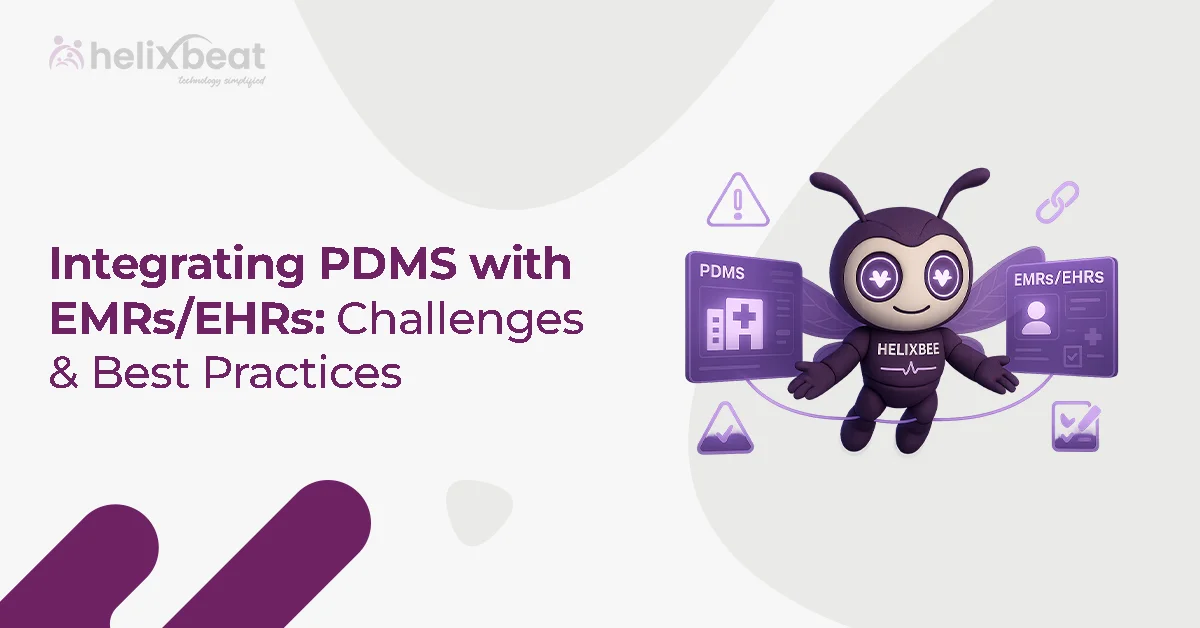How can a small healthcare practice compete and grow in an increasingly complex and competitive environment? The answer lies in utilizing a healthcare CRM tool that streamlines patient management, enhances engagement, and facilitates efficient operations.

Table of Contents
Understanding Healthcare CRM Systems
A healthcare CRM tool has become a game-changer for these practices, enabling them to streamline operations, enhance patient engagement, and accelerate growth.
Small healthcare providers often struggle with fragmented patient data, time-consuming manual processes, and limited marketing reach. Healthcare CRM software addresses these challenges by:
- Centralizing patient information on one accessible platform, reducing errors and saving time.
- Supporting targeted outreach campaigns to attract new patients without increasing overhead.
- Providing actionable analytics that guide decision-making and identify growth opportunities.
While both CRM (Customer Relationship Management) and EHR (Electronic Health Record) systems handle patient information, their purposes and functionalities differ significantly:
Why Choose the Best Healthcare CRM Software?
Selecting the ideal healthcare CRM software can have a significant impact on medical practices, clinics, and hospitals. The appropriate CRM solution facilitates patient management, enhances communication, and boosts operational efficiency.
One of the best healthcare CRM software is PULSE by Helixbeat, it is designed specifically to address the unique needs of the healthcare industry, including compliance with regulations like HIPAA, secure patient data handling, and integration with Electronic Health Records (EHR) systems. Selecting a high-quality CRM ensures your practice remains competitive, patient-focused, and data-driven.
3 Types of Healthcare CRM Software Explained
Healthcare CRM software typically falls into three main categories, each designed to serve different but complementary purposes within a medical practice:
Operational CRM
- This type focuses on automating and enhancing everyday interactions between patients and providers.
- Features include appointment scheduling, automated reminders, patient registration, billing workflows, and service management.
- Operational CRMs help reduce manual tasks and improve efficiency on the front lines of patient care.
Analytical CRM
- Analytical CRM centers around collecting, analyzing, and interpreting patient and operational data.
- It provides healthcare organizations with dashboards, reports, and predictive analytics to understand patient trends, treatment outcomes, and operational bottlenecks.
- This insight supports data-driven decision-making to improve quality of care and resource allocation.
Collaborative CRM
- Collaborative CRM facilitates communication and information sharing among healthcare teams, departments, and even with patients.
- It ensures that everyone involved in a patient’s care, from primary physicians to specialists and support staff, can access necessary information, coordinate treatments, and track patient progress in real time.
3 Common Myths About CRM Healthcare
Despite growing adoption, some myths continue to surround healthcare CRM software. Clarifying these misconceptions can help practices make better-informed decisions:
- Myth: CRM Software Is Only Useful for Large Hospitals
- Many believe CRM solutions are too complex or costly for small or mid-sized practices.
- Scalable and affordable CRM options are now available that cater specifically to smaller providers, delivering significant benefits in patient engagement and workflow efficiency without requiring large IT teams.
- Myth: Implementing CRM Is Too Expensive and Disruptive
- While early CRM solutions could be costly and complex, modern cloud-based healthcare CRM software often offers flexible subscription pricing and easy integration with minimal disruption.
- Many vendors provide turnkey solutions with quick deployment and intuitive interfaces that reduce the learning curve.
- Myth: CRM Replaces Electronic Health Records (EHR)
- This is a common misunderstanding.
- CRMs complement EHR systems by focusing on managing patient relationships, communication, and business workflows, whereas EHRs are designed for clinical documentation and medical record-keeping.
- Together, they create a powerful ecosystem for patient care and practice management.
Developing and Enhancing Healthcare CRM Solutions
The following nine steps outline a typical development process that helps deliver a user-friendly, secure, and feature-rich CRM solution:
- Requirement Analysis
- Understand the specific needs of healthcare providers, including patient management, appointment scheduling, billing, and compliance with the Health Insurance Portability and Accountability Act (HIPAA).
- Engaging with end-users such as doctors, nurses, and administrative staff during this phase ensures that the CRM addresses real-world pain points and workflow challenges.
- Define Core Features
- Identify and prioritize the key features your healthcare CRM must have.
- Essential functionalities often include contact and patient information management, communication tracking, appointment reminders, reporting dashboards, integration capabilities with Electronic Health Records (EHR).
- And analytics to monitor patient engagement and operational efficiency.
- Choose the Development Approach
- Decide between building a custom CRM tailored to your practice or opting for a ready-made, off-the-shelf solution.
- Many healthcare providers choose Helixbeat’s proven healthcare CRM solutions for faster deployment combined with robust customization options.
- Design UI/UX
- A user-friendly design is critical for adoption.
- Create an intuitive interface that medical and administrative staff can navigate effortlessly.
- The UI should be mobile-responsive, accessible, and optimized to reduce training time.
- Focus on minimizing clicks and simplifying data entry to enhance productivity.
- Develop the Backend
- Build a secure and scalable backend infrastructure capable of managing sensitive patient data safely.
- Incorporate encryption methods, role-based access controls, and audit trails to meet healthcare compliance standards.
- The backend should support real-time data processing and ensure high availability.
- Integrate Third-Party Systems
- Seamless integration with existing healthcare technologies is vital.
- Connect your CRM with EHR platforms, telehealth solutions, billing systems, and payment gateways.
- Adopting interoperability standards like HL7 and FHIR can facilitate smooth data exchange and improve care coordination.
- Implement Testing
- Conduct comprehensive testing that includes security audits, functionality verification, performance benchmarking, and usability testing.
- Early identification of bugs and vulnerabilities helps prevent costly fixes post-deployment and improves user confidence in the system.
- Deploy and Train
- After successful testing, deploy the CRM system and plan through training sessions tailored to different user roles.
- Proper onboarding accelerates adoption and ensures that staff can use the tool effectively from day one, maximizing the CRM’s benefits.
- Continuous Improvement
- Healthcare needs and technology evolve rapidly.
- Collect ongoing feedback from users and monitor system performance metrics to inform regular updates.
- Incorporate new features like AI-driven analytics or enhanced automation to keep your CRM ahead of the curve and continuously improve patient engagement and operational efficiency.
In Summary
Implementing a healthcare CRM tool can greatly benefit small medical practices by streamlining patient information, automating administrative tasks, and fostering personalized communication. This leads to improved patient engagement, better care coordination, and enhanced operational efficiency.
For small practices striving to thrive in a technology-driven healthcare environment, choosing the right CRM software, whether a custom solution or a trusted platform like Helixbeat is vital for sustainable growth and improved patient outcomes.
Unlock your practice’s growth potential? Get Started with the Best Healthcare CRM Software Today
FAQs
- What is a healthcare CRM tool?
A healthcare CRM tool is designed to help medical practices manage patient relationships, streamline communication, and automate administrative tasks to improve care and efficiency.
- How is CRM used in healthcare?
CRM systems in healthcare are used for patient scheduling, follow-ups, data management, personalized communication, and integration with Electronic Health Records (EHR) to enhance patient engagement.
- What are the four types of CRM?
The four common CRM types are Operational, Analytical, Collaborative, and Strategic, each focusing on different aspects like automating processes, analyzing data, or improving collaboration.
- How do you evaluate CRM effectiveness?
CRM effectiveness is measured by improved patient retention, increased appointment adherence, reduced administrative workload, and enhanced patient satisfaction scores.
- What are some best practices for CRM in healthcare?
Best practices include ensuring compliance with healthcare regulations, seamless integration with EHR systems, training staff thoroughly, and continuously updating the CRM based on user feedback.
- How Is CRM Used in Healthcare?
It’s used for scheduling, patient follow-ups, managing medical records, personalizing care, and streamlining administrative tasks.
- How Do You Evaluate CRM Effectiveness?
By tracking metrics such as patient retention, appointment rates, workflow efficiency, and patient satisfaction.
- What Are CRM Practices?
These are strategies and activities like data management, compliance adherence, integration with other systems, and user training to maximize CRM benefits.














